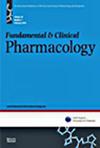Relaxin-2 mitigates the interaction between monocytes and endothelial cells by suppressing Egr-1
Abstract
Background
An overproduction of oxidized low-density lipoprotein (ox-LDL) can lead to vascular endothelial dysfunction. Relaxin-2, a novel peptide hormone, exhibits various biological functions within the cardiovascular system. However, the effects of Relaxin-2 in atherosclerosis (AS) are underreported.
Objectives
We aimed to investigate the regulatory role of Relaxin-2 in the endothelial function of human aortic endothelial cells (HAECs) upon ox-LDL stimulation.
Methods
HAECs were stimulated with ox-LDL (100 mg/l) and rhRelaxin-2 (25, 50 nM) for 24 h. Multiple techniques, including real-time PCR, Western blot analysis, ELISA, and Calcein AM staining, were applied.
Results
Treatment with human recombinant (rh) Relaxin-2 decreased lectin-like ox-LDL receptor 1 (LOX-1), a primary receptor for ox-LDL, in HAECs. rhRelaxin-2 also reduced the ox-LDL-induced expression of pro-inflammatory mediators such as interleukin 6 (IL-6), tumor necrosis factor-α (TNF-α), and monocyte chemoattractant protein-1 (MCP-1). Additionally, we observed increased expression of cyclooxygenase-2 (COX-2), prostaglandin E2 (PGE2), and high mobility group protein B1 (HMGB-1) in ox-LDL-challenged HAECs, which was diminished by rhRelaxin-2. Significantly, the heightened expression of intercellular cell adhesion molecule-1 (ICAM-1) and E-selectin in ox-LDL-stimulated HAECs was mitigated by rhRelaxin-2. Consequently, rhRelaxin-2 alleviated the attachment of THP-1 cells to HAECs in a dose-dependent manner. Mechanistically, we found that rhRelaxin-2 inhibited the expression of Egr-1, a central mediator of endothelial inflammation. Furthermore, overexpression of Egr-1 was found to negate the beneficial effects of rhRelaxin-2, suggesting that these effects are mediated by the suppression of Egr-1.
Conclusion
Our findings propose a novel therapeutic approach with rhRelaxin-2 for patients with atherosclerosis.

 求助内容:
求助内容: 应助结果提醒方式:
应助结果提醒方式:


